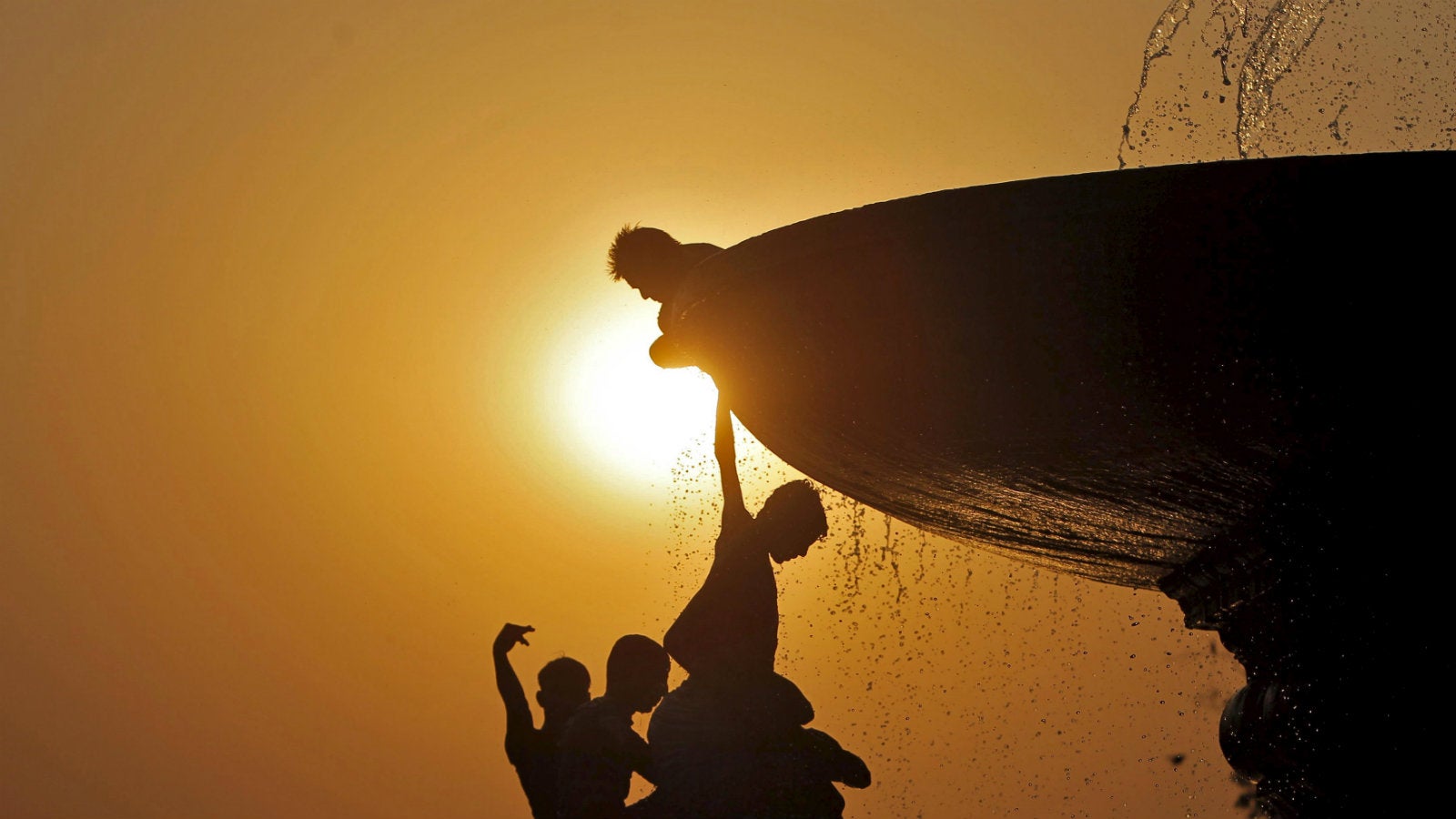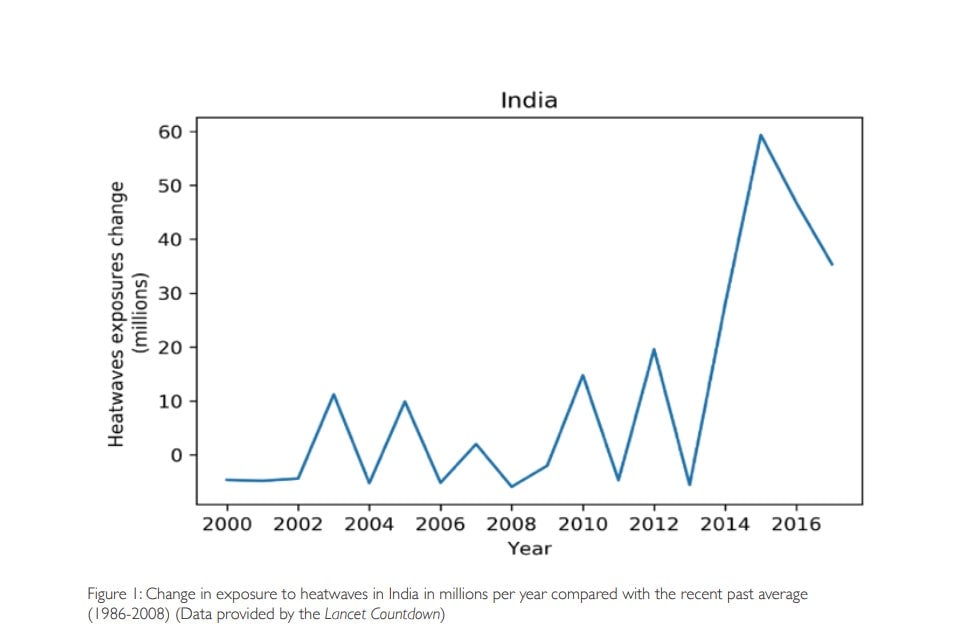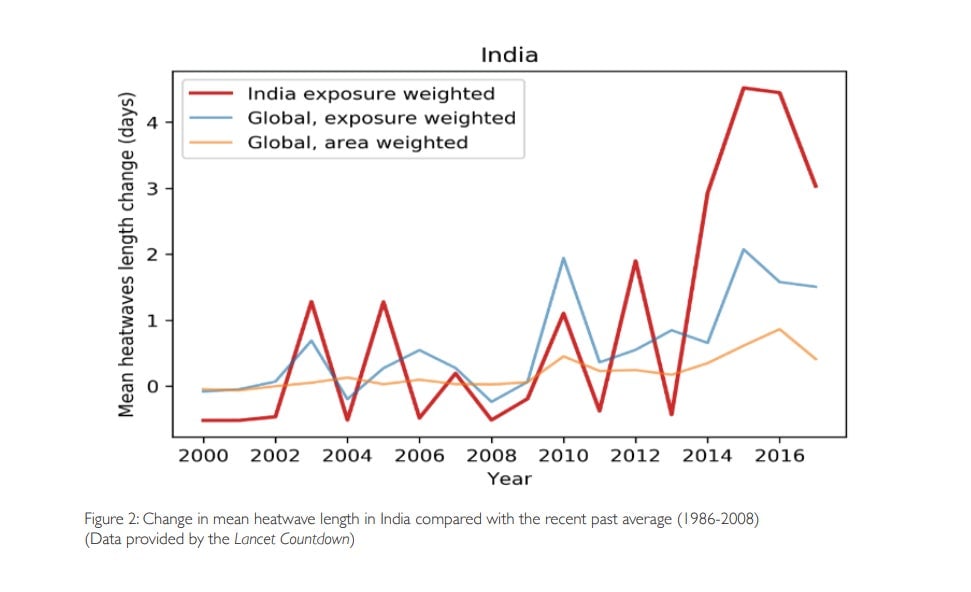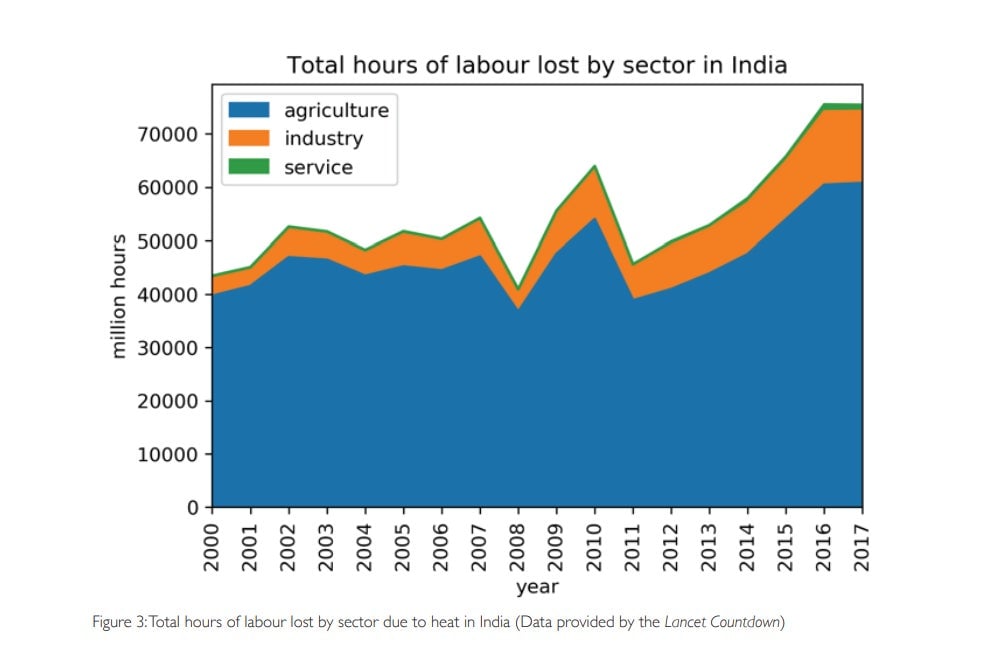Besides killing people, India’s heatwaves could also ravage its economy
Climate change is hitting India particularly hard, and the proof lies in the intensifying heatwaves—and their increasing frequency—sweeping the country.


Climate change is hitting India particularly hard, and the proof lies in the intensifying heatwaves—and their increasing frequency—sweeping the country.
There were 40 million more “heatwave exposure events” in India in 2016, compared to 2012, according to this year’s Lancet Countdown on health and climate change. The annual report, produced by 27 academic institutions and inter-governmental organisations around the world, studies the implications of climate change on health around the world.
The report found that there has been a marked increase in both the number of vulnerable Indians over the age of 65 exposed to heatwaves and the duration of heatwaves in the past two decades, indicating the growing threat to public health.


In 2016, India experienced its hottest year in over a century, and hundreds died from sunstroke. Last year was also one of the warmest in recorded history. Just a few months ago, temperatures in parts of northern India and the southern states of Andhra Pradesh and Telangana surged over 45 degrees.
Burning hot temperatures have a significant economic cost, especially for the agricultural sector in India, which accounts for 18% of its GDP (pdf) and employs nearly half its population. Heatwaves caused a loss of nearly 75,000 million hours of labour in 2017, compared to 43,000 million hours in 2000, according to the Lancet report.

“For a developing economy like India, this represents a substantial impact on individual, household
The briefing, prepared by the Lancet Countdown, the Public Health Foundation of India, and the Centre for Environmental Health, suggests the Indian government needs to identify “heat hot-spots” and deploy effective and timely heat action plans in these areas. The country has increasingly adopted the latter, and authorities say heat action plans are starting to make a difference. But the policy briefing also emphasises the need for better health standards, labour laws, and regulations to protect workers from intensifying heat.
This is hardly the first time India has been warned about the threat of heatwaves. Previous research has shown that rising global temperatures could make an event like the 2015 heatwave that killed thousands in India and Pakistan occur every year. And parts of the subcontinent could soon even become unlivable because of rising temperatures.